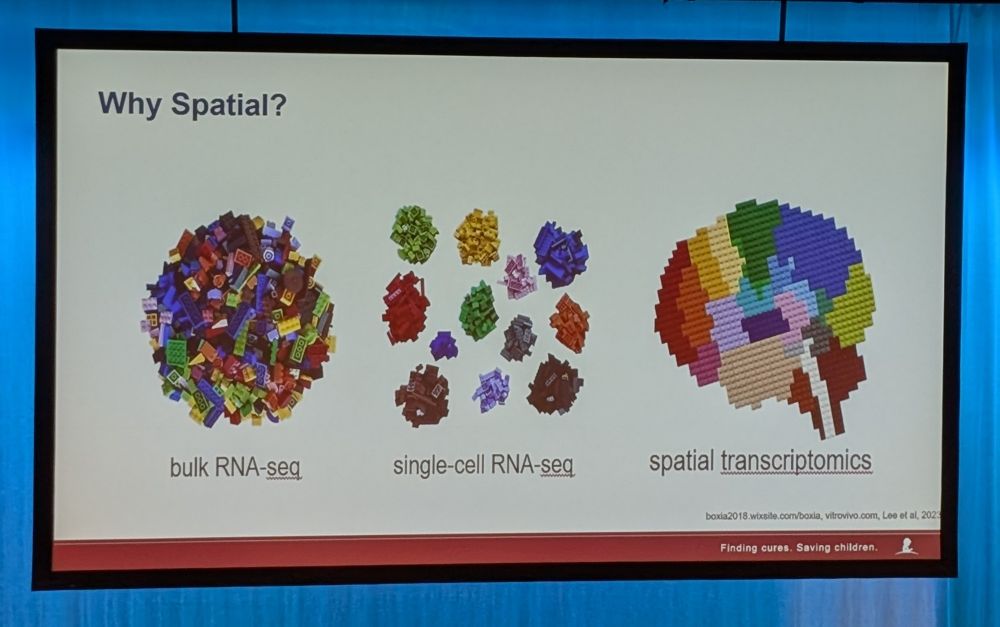fast.ai co-founder, math PhD, data scientist
Writing: https://rachel.fast.ai/
(studies on some of the diagnosis delays, pain mismanagement, and biases that are recorded as fact in medical data) 7/

(studies on some of the diagnosis delays, pain mismanagement, and biases that are recorded as fact in medical data) 7/
The success of AlphaFold was made possible by 50 years of prior work gathering protein structures into a rich database (Protein Data Bank launched in 1971) 3/

The success of AlphaFold was made possible by 50 years of prior work gathering protein structures into a rich database (Protein Data Bank launched in 1971) 3/
(Image from Chen, et al, 2020, Hierarchical Image Pyramid Transformer)

(Image from Chen, et al, 2020, Hierarchical Image Pyramid Transformer)
Patterns learned from one dataset or one task are likely to generalize to others. 2/

Patterns learned from one dataset or one task are likely to generalize to others. 2/
(This is the first talk I've seen incorporating the ECM with omics-- it's an interesting perspective!)
Amelia Parker 6/

(This is the first talk I've seen incorporating the ECM with omics-- it's an interesting perspective!)
Amelia Parker 6/
-- Amelia Parker #multiomics2024 /5

-- Amelia Parker #multiomics2024 /5
Zoe West 4/

Zoe West 4/
- glycolysis
- oxidative stress
- fatty acid
- amino acid
Spatial data can be used to understand these altered pathways in treatment resistant vs responsive cancer patients
-- Naomi Berrell 2/

- glycolysis
- oxidative stress
- fatty acid
- amino acid
Spatial data can be used to understand these altered pathways in treatment resistant vs responsive cancer patients
-- Naomi Berrell 2/
Even if these 4 samples had the same proportions of cell types, the spatial arrangement is vastly different.
@lochlanfennell.bsky.social #multiomics2024 1/

Even if these 4 samples had the same proportions of cell types, the spatial arrangement is vastly different.
@lochlanfennell.bsky.social #multiomics2024 1/
Yuqi Tan developed the SPACEc python library to provide a streamlined, integrated tool for image extraction, cell segmentation, data preprocessing, & spatial analysis
www.biorxiv.org/content/10.1... 7/

Yuqi Tan developed the SPACEc python library to provide a streamlined, integrated tool for image extraction, cell segmentation, data preprocessing, & spatial analysis
www.biorxiv.org/content/10.1... 7/
Processes such as cancer, wound healing, & embryonic development occur in both time AND space.
@shazanfar.bsky.social 5/

Processes such as cancer, wound healing, & embryonic development occur in both time AND space.
@shazanfar.bsky.social 5/
- Tissue structure / library sizes
- Images captured for each FOV (Field of View) separately
- Antibody-binding affinity differences
- Cells overlapping in z-axis
- Partial cells captured
- Background intensity
- Instrument noise
@bhuvad.bsky.social 3/

- Tissue structure / library sizes
- Images captured for each FOV (Field of View) separately
- Antibody-binding affinity differences
- Cells overlapping in z-axis
- Partial cells captured
- Background intensity
- Instrument noise
@bhuvad.bsky.social 3/
-- Dharmesh Bhuva 2/

-- Dharmesh Bhuva 2/
Tumor cell subtyping of non-small cell lung cancer found 5 distinct tumor clusters which differed in outcomes
-- Ettai Markovits of NucleAI kicking off computational bio session #multiomics2024 1/

Tumor cell subtyping of non-small cell lung cancer found 5 distinct tumor clusters which differed in outcomes
-- Ettai Markovits of NucleAI kicking off computational bio session #multiomics2024 1/
Seurat & Harmony correct data at embedding-level.
Domain-specific methods (log-norm, CLR, dsb, etc) correct data at feature-level
However, all can end up removing biological signals. New proposed approach:

Seurat & Harmony correct data at embedding-level.
Domain-specific methods (log-norm, CLR, dsb, etc) correct data at feature-level
However, all can end up removing biological signals. New proposed approach:
@drjasminewilson.bsky.social research on Aspenglow novel 3D imaging to capture this detail 2/


@drjasminewilson.bsky.social research on Aspenglow novel 3D imaging to capture this detail 2/
- viruses theorised as trigger of islet autoimmunity
- both cases & controls show peptides unique to them
- differential immune response to same viruses
- Rather than infection with a specific virus, may be triggered by how the immune system responds



- viruses theorised as trigger of islet autoimmunity
- both cases & controls show peptides unique to them
- differential immune response to same viruses
- Rather than infection with a specific virus, may be triggered by how the immune system responds
-- Fei Yang 6/

-- Fei Yang 6/
#multiomics2024 5/

#multiomics2024 5/
-- Tullia Bruno 2/

-- Tullia Bruno 2/
-- Anand Jeyesekaran kicking off the Immuno-Oncology session for #multiomics2024 🧵 1/

-- Anand Jeyesekaran kicking off the Immuno-Oncology session for #multiomics2024 🧵 1/
#multiomics2024 10/

#multiomics2024 10/


- Diversity of Data
- Which resolution? Multiscale Training
- Tiles Centric vs. Cell Centric?
- Transformer based vs other architecture?
- distillation of larger models into efficient smaller models?
- Intrinsic Biases
- Model Drift

- Diversity of Data
- Which resolution? Multiscale Training
- Tiles Centric vs. Cell Centric?
- Transformer based vs other architecture?
- distillation of larger models into efficient smaller models?
- Intrinsic Biases
- Model Drift

